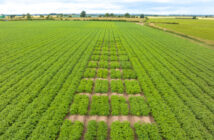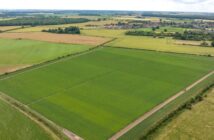The Environment Agency is calling on growers to think ‘soil, slope and stream’ when they apply metaldehyde-based slug pellets to crops. It urges growers to adhere to the current guidelines on metaldehyde use to avoid contaminating watercourses and protect drinking water supplies.
Metaldehyde is the pesticide that most often causes risks to drinking water sources, especially in the autumn. Farmers need to operate ‘best practice’ to avoid pollution. If metaldehyde enters watercourses it can threaten drinking water quality. This can result in disruption of water abstraction to treatment works and reservoirs.
Good practice from farmers is required to prevent metaldehyde entering watercourses. This includes taking into consideration:
1. the slope of the field – steeper fields are a higher risk
2. the drainage status of the field – heavy soils and under-draining are a high risk
3. the proximity of watercourses or ditches – fields adjacent to these are high risk
4. the current and predicted weather – saturated soils and heavy rain can cause a high risk of runoff
5. the filling and wash down area of the pellet applicator – areas which run off to drains or watercourses will have a high risk of pollution
Visit WIYBY and enter the relevant postcode to find out if there is a metaldehyde risk in your area.
Metaldehyde Stewardship Group guidelines promote autumn restrictions to prevent the pesticide from causing water pollution. The restriction period runs from 1 August to 31 December. These recommend a maximum total application rate of 210g/ha of the active ingredient, which may be reduced to 160g/ha or less upon the recommendation of a BASIS qualified advisor.
The maximum application rate of 700g/ha/calendar year is now a statutory legal requirement, plus a 6 metre no-spread zone adjacent to watercourses. Alternatives, such as ferric phosphate, are available and should be considered in high risk areas, particularly if you are approaching the metaldehyde limit.



